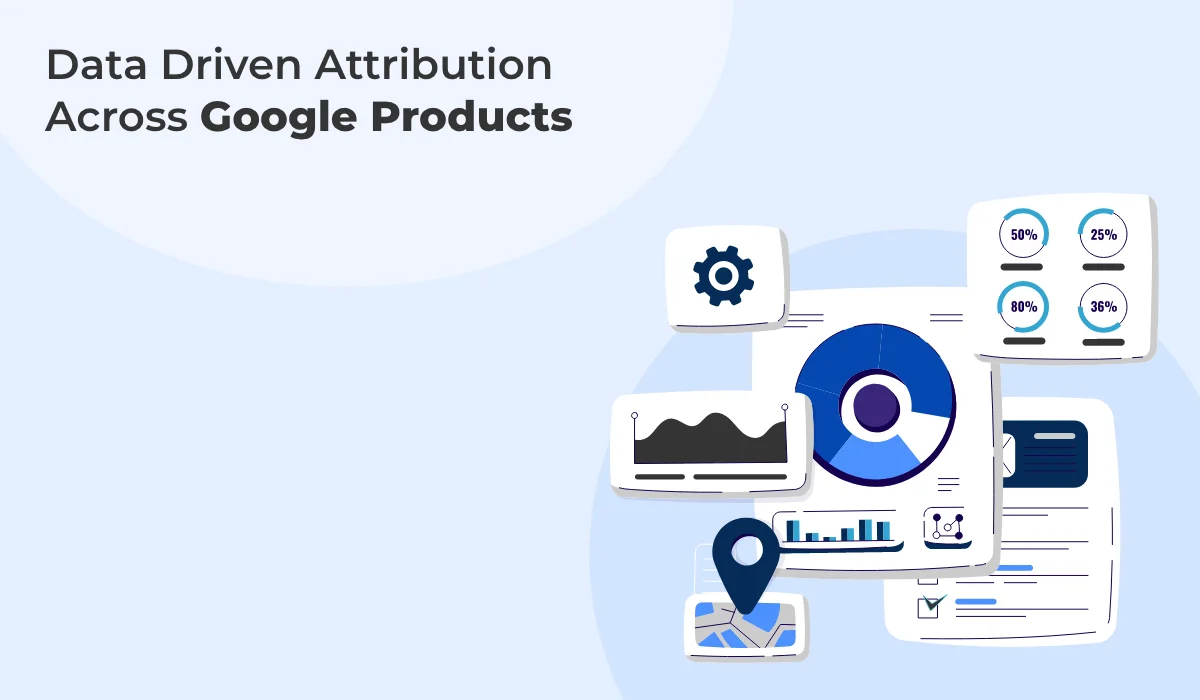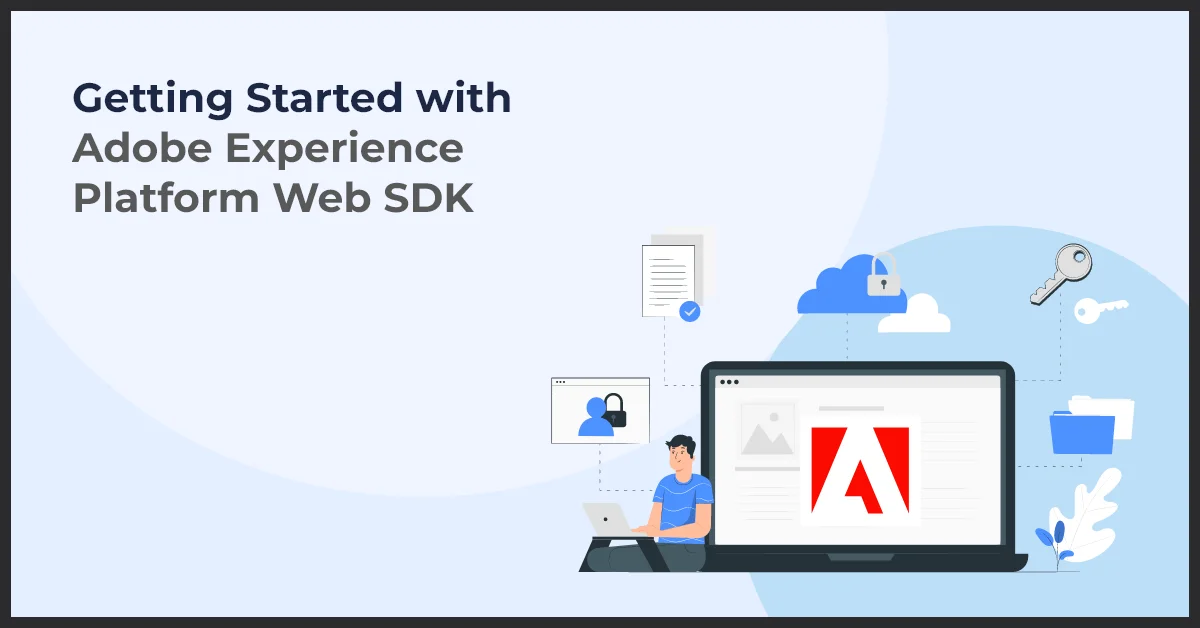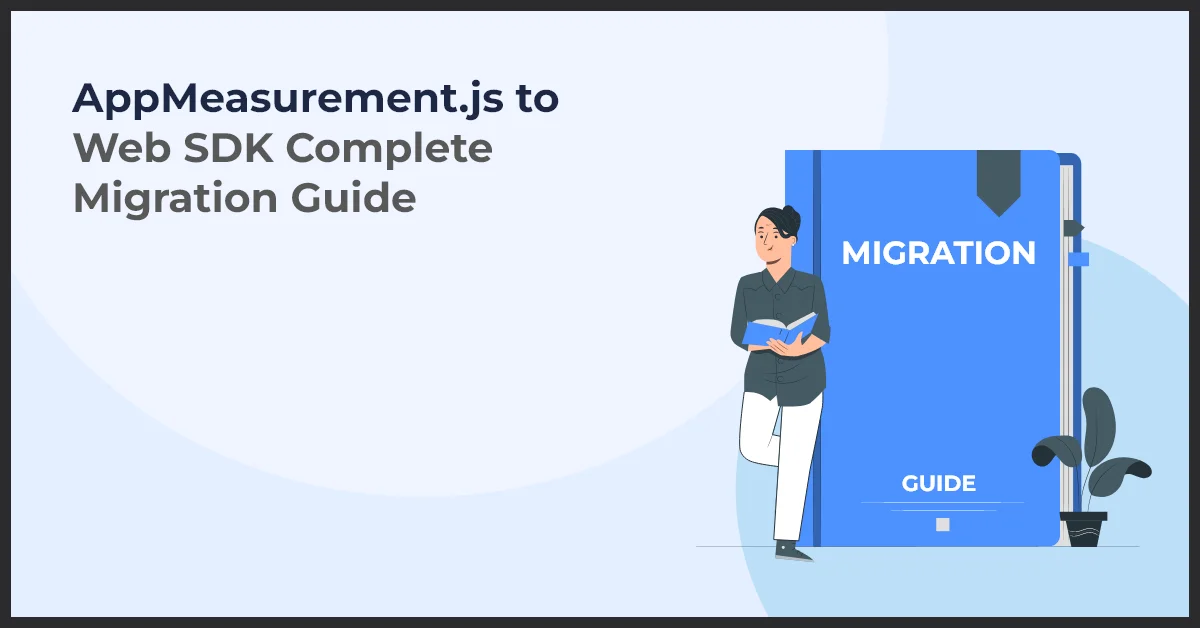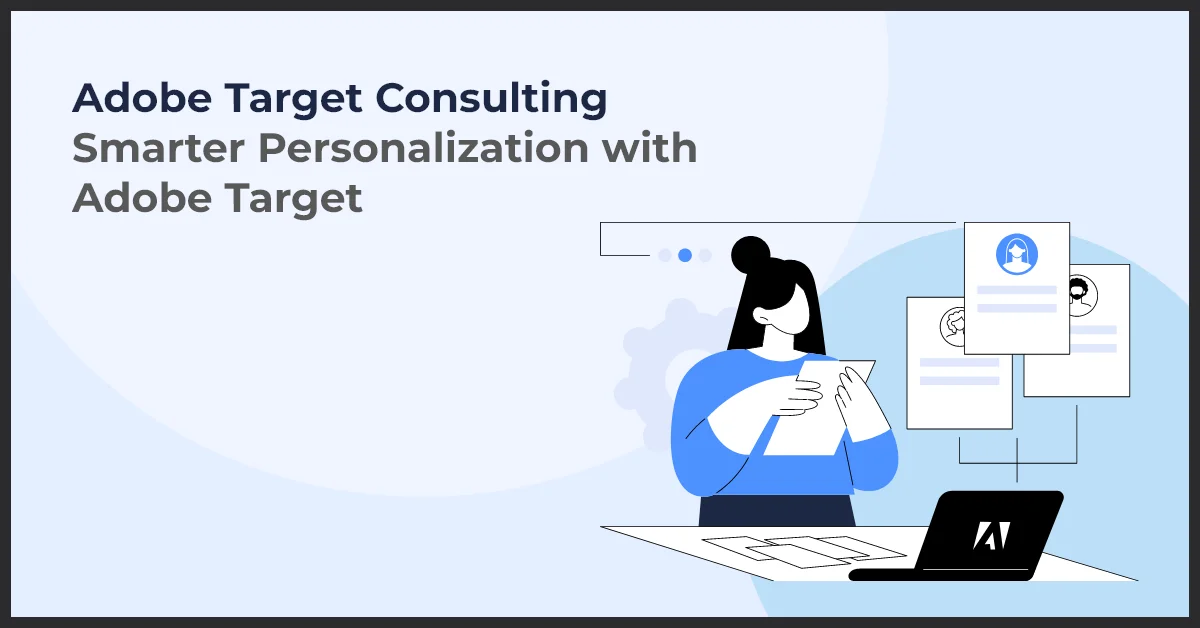Everything You Need to Know About Data-Driven Attribution Across Google Products

Published on: October 13, 2022
Updated on: September 17, 2024
2010 Views
- Analytics
19 min read
The digital advertising budget in 2022 is expected to increase by 15.6% from the $521.02 billion budget last year. As digital spending increases, the pressure to prove ROI further increases. For this, it is crucial to identify the right channels and ads that move prospects further into the funnel.
If you are a digital marketer looking to optimize your digital budget, it is natural to look at the data-driven attribution by Google. Google provides different attribution models for its range of products for accurate results. But how do you decide which product will suit you the best? Does your business need Google Ads or Search Ads 360?
In this article, we will discuss Google’s data-driven attribution and how it differs across its products.
Quick Overview of Google’s Data-Driven Attribution
Data-driven attribution by Google takes your advertising account’s data as the starting point for analyzing attribution. It uses algorithms to uniquely evaluate every case and determine the influence of all the channels in the funnel.
Unlike predefined formulas, data-driven attribution analyzes data even if it is inconsistent, complicated, or involves multiple steps. While Google offers data-driven attribution in a range of its products, they differ from each other. That’s because each product uses a different algorithm and has different data sets and customization levels.
For example, some data-attribution models are designed to optimize paid campaigns, along with keywords, and monitor only clicks. Others offer a holistic view of the customer’s journey.
Therefore, before you choose a particular Google product, ask the following questions:
How much is your advertising budget?
What is your business objective?
What is your monthly average conversion rate?
What is your website traffic?
These questions will help you determine the right product for your business. Let us find out how.
Understanding Conversion Tracking
In the realm of marketing campaigns having a grasp of conversion tracking is vital.. What exactly does a conversion entail? Why is it so important?
A conversion refers to the desired action taken by a user on a website such as making a purchase, subscribing to a newsletter or downloading a file. It represents an interaction between the customer and the business.
Tracking conversions holds significance as it provides valuable insights into the efficacy of marketing endeavors. By understanding which actions result in conversions businesses can optimize their strategies. Allocate resources efficiently.
There are types of conversions that businesses can monitor based on their objectives. These conversions can range from e commerce transactions to newsletter registrations and even app downloads. Each type carries its importance and necessitates tailored tracking mechanisms.
By employing conversion tracking methods businesses can assess the success of their marketing campaigns with accuracy. This data driven approach empowers them to make informed decisions grounded in evidence rather than mere assumptions.
To ensure conversion tracking businesses often leverage tools like Google Analytics that offer a suite of features for tracking and reporting. These tools enable businesses to gain insights into user behavior and gauge the effectiveness of their marketing efforts.
Key Takeaways:
- Conversions refer to the actions users take on a website like making a purchase or signing up for a newsletter.
- Accurate tracking of conversions provides insights into the effectiveness of marketing strategies.
- Tailored tracking mechanisms are necessary for types of conversions.
- Google Analytics is a tool for tracking and reporting conversions.
- Understanding Modeling in Data Driven Attribution
Models play a role in analyzing customer behavior and determining the impactful marketing touchpoints when it comes to data driven attribution. They enable businesses to assess the influence of each interaction on the customer journey and assign credit accordingly. Let's delve into the concept of modeling in data driven attribution in detail.
Introduction to Attribution Models and Their Importance
Attribution models are representations that assign credit to marketing touchpoints along the customer journey. These models help businesses identify which channels, campaigns or strategies contribute significantly to conversions. By analyzing attribution data companies can optimize their marketing efforts. Allocate budgets efficiently.
Different Types of Models Commonly Used in Data Driven Attribution
There are attribution models each, with its own strengths and weaknesses. The used ones include First Touch, Last Touch, Linear, Time Decay and Position Based models.Different attribution models, such as First Touch, Last Touch, Linear, Time Decay and Position Based attribute credit differently to the touchpoints of customer interactions. First Touch gives all credit to the touchpoint while Last Touch puts all credit on the one. Linear distributes credit equally across all touchpoints. The Time Decay model gives credit to touchpoints for conversion. Position Based assigns the credit to the last touchpoints and distributes the rest among intermediate ones.
Utilizing attribution models provides businesses with insights from data. It helps them identify marketing channels, campaigns or strategies that drive conversions. Moreover modeling enables businesses to better understand their customers journey and make data driven decisions to improve their marketing efforts. By leveraging these insights companies can optimize their budget allocation, enhance customer targeting practices and boost marketing effectiveness.
To achieve data driven attribution accurately it is crucial for businesses to gather and analyze sources of marketing data such as website analytics and CRM data. By tapping into these resources businesses can gain knowledge of how their marketing efforts impact conversions.
This process enables businesses to gain insights into the customer journey and pinpoint the touchpoints that contribute to conversions. By analyzing this data businesses can make informed decisions regarding the allocation of their marketing budget and resources.
Moreover, effectively utilizing data plays a role in data driven attribution. By harnessing data in a manner businesses can uncover hidden patterns and trends that might have otherwise gone unnoticed. This deeper understanding of customer behavior allows for attribution models and enhances decision making capabilities.
Website analytics- By delving into website analytics businesses can track user behavior, identify landing pages and measure conversion rates.
CRM data- Customer Relationship Management (CRM) data provides insights into customer interactions empowering businesses to personalize their marketing messages.
In conclusion harnessing the power of data is crucial for data driven attribution. By leveraging sources of marketing data collecting and analyzing it effectively and utilizing the resulting insights wisely businesses can make decisions that drive conversions while maximizing their return on investment, in marketing efforts.
Data-Driven Attribution: Google Analytics 360
Google Analytics 360 offers multi-channel funnels data-driven attribution. This attribution model is based on the Shapley Value algorithm, which assesses the users’ path through current touchpoints and eliminates one of the touch points to create an alternative variant. This algorithm is excellent if you want to know how a particular channel influences the conversion probability.
Data-driven attribution in Google Analytics 360 analyzes data from different sources, including organic search, direct and referral traffic, and any data you might have imported to the platform. These could be all the data from other Google products, such as Campaign Manager 360 and Google Ads.
Data-driven attribution in Google Analytics 360 offers an overview of your online users’ behavior in the funnel and how each touchpoint influences conversion. Because of this, it is most suited for websites with high traffic and volume of conversions.
Here are the minimum requirements for using data-driven attribution in Google Analytics 360:
1. You need a Google Ads account with at least 15,000 clicks and a minimum of 600 conversions in the last 30 days.
2. Clearly defined goals in your account.
You need to meet both these requirements to start using data-driven attribution in Google Analytics 360.
To continue using it, you need to ensure you meet the minimum conversion threshold of:
1. 400 conversions of each type, and both of them must have a path length of a minimum of two interactions.
2. 10,000 interaction paths in a particular view.
These requirements are counted for the last 28 days.
Now that you know what it takes to use data-driven attribution in Google Analytics 360, let us look at some of its pros and cons.
Advantages of Using Data-Driven Attribution in Google Analytics 360
- A complete overview and analysis of a user’s online journey.
- Identify which keywords, ads, and campaigns have the maximum impact on conversions.
- Data analysis and the first model report are available as early as seven days.
- Efficiently distribute credit for revenue depending on the historical data for a conversion.
Disadvantages of Data-Driven Attribution in Google Analytics 360:
- Data-driven attribution in Google Analytics 360 can be costly, as the cost of an account begins at $150,000/year.
- Reports’ calculation logics are not clearly explained.
- Requires a high number of clicks and conversion to continue using.
- Excludes offline data like data in CRM and phone calls.
- Google Ads account is a prerequisite to using it.
Data-Driven Attribution: Google Ads
Google Ads has a default attribution model, last click. To customize data-driven attribution in this product, you must meet the required threshold.
The default setting of data-driven attribution does not capture the entire customer journey. Instead, it only analyzes the clicks on your ads, based on which the model compares visitors who bought your product with those who didn’t to recognize patterns in the ad interactions that resulted in conversions.
To boost conversions, leverage the data-attribution model to create a bidding strategy and automate it.
Since Google Ads doesn’t allow users to execute marketing campaigns on different channels, it has less detailed reports, making the product a great fit for medium-to-large sized companies that have to optimize their keywords and marketing campaigns.
There are a few prerequisite requirements to get started with data-driven attribution in Google Ads.
- You need to have at least 3,000 ad interactions across supported networking and 300 conversions in the last 30 days.
If you want to continue using this model, you need to consistently meet these conversion thresholds in the past 30 days:
- 2,000 ad interactions
- 200 conversions
Advantages of Data-Driven Attribution in Google Ads:
- It is a great way to optimize keywords and paid campaigns.
- It helps in optimizing bidding.
- Highlights your most successful ads that help in reaching your business goals.
Disadvantages of Data-Driven Attribution in Google Ads:
- Limited overview of the customer’s journey.
- Requires a minimum level of conversions and clicks for 30 successive days before the data becomes available.
- Automatically switches the attribution model to Linear if users fail to meet the minimum threshold.
Data-Driven Attribution: Search Ads 360
Search Ads 360 has native integration with the Google Marketing platform. This integration lets you effectively manage your marketing campaigns across different engines, including Yahoo!, Google Ads, Baidu, and Microsoft Advertising.
Like Google Ads, Search Ads 360 also uses the last click attribution model by default. Search Ads 360 also requires you to meet a minimum click and conversion criteria to configure the default data-driven attribution model.
The only difference between these two is that Search Ads 360 uses Floodlight to analyze online activities. Floodlight is the Google Marketing Platform’s conversion tracking system.
The attribution shows how clicks on the keywords of paid marketing campaigns influence conversions. Search Ads 360’s data-driven attribution model lets you create or adjust a customized bid strategy that can optimize bids depending on the model’s data.
Because of its integration with Google Marketing Platform, the Search Ads 360 service is ideal for websites looking to optimize their paid ads and have a high volume of conversions.
Here are the minimum requirements for using data-driven attribution in Search Ads 360:
- 15,000 clicks and 600 conversions in the last 30 days
Advantages of Data-Driven Attribution in Search Ads 360:
- Provides near real-time reporting data.
- Offers Smart Biding to optimize bids automatically.
- Allows users to build five data-driven attribution models for comparing the information with various channel groupings.
- Enables users to upload offline conversions.
Disadvantages of Data-Driven Attribution in Search Ads 360:
- It does not consider display and search impressions.
- It might be inaccurate since Search Ads 360 uses previous data and machine learning to model conversion if it is not feasible to measure all conversions.
- It does not track conversion numbers attributed to organic search.
Benefits of Data Driven Attribution, for Businesses
Utilizing data driven attribution offers advantages to businesses seeking to optimize their marketing strategies and maximize their return on investment (ROI).
How Data Driven Attribution Assists in Optimizing Marketing Budgets
By analyzing and comprehending the impact of each marketing touchpoint, data driven attribution empowers businesses to allocate their marketing budget efficiently. It provides insights into the channels and campaigns that drive the conversions allowing businesses to concentrate their resources on the most successful strategies.
Enhanced Understanding of Customer Journey and Touchpoints
Data driven attribution grants businesses a view of their customers journey starting from engagement all the way to final conversion. By tracking and analyzing every touchpoint throughout this journey businesses can gain an understanding of customer behaviors and preferences. This visibility enables them to tailor their marketing efforts and messaging in order to better meet customer needs.
The Role of Machine Learning and Artificial Intelligence in Data Driven Attribution
Machine learning and artificial intelligence play a role in enhancing the accuracy and effectiveness of attribution models, within data driven attribution. These advanced technologies are revolutionizing how businesses analyze data and allocate credit across marketing touchpoints.
Explanation of how machine learning and AI enhance data driven attribution.
Machine learning algorithms have the ability to analyze amounts of data and uncover patterns and correlations that traditional modeling approaches often miss. By processing data, on customer journeys and conversions these algorithms can reveal intricate and nonlinear relationships between different touchpoints and conversion events. This empowers businesses to gain an accurate understanding of how each marketing channel contributes to driving conversions.
On the other hand , artificial intelligence can automate attribution processes and constantly improve models through iterative learning. AI powered algorithms can. Optimize themselves based on data inputs ensuring that attribution models remain up to date and relevant. This level of automation and adaptability allows businesses to extract insights from their data at scale without requiring intervention.
Advantages of automating attribution processes using these technologies
The utilization of machine learning and artificial intelligence in data driven attribution offers benefits:
- Enhanced accuracy - By leveraging algorithms businesses can precisely attribute conversions to the marketing touchpoints that genuinely influenced them. This reduces bias in the analysis process while enabling optimization of marketing campaigns.
- Efficiency and scalability - Machine learning and AI enable the automation of attribution processes eliminating the need for analysis.
- Businesses can leverage AI powered tools to efficiently analyze datasets and expand their efforts, in attributing results across channels and campaigns.
- Real time insights - By utilizing AI driven attribution models businesses can gain real time insights into the performance of their marketing channels. This empowers them to make data informed decisions on the go enabling optimization and maximization of their marketing return on investment.
Trends and advancements in machine learning and AI for attribution
The future prospects for machine learning and artificial intelligence in data driven attribution are highly promising. As technology continues to advance we can anticipate developments;
Deep learning - Drawing inspiration from the networks of the brain, deep learning algorithms have the potential to uncover even more profound insights into customer journey behavior and attribution. These algorithms excel at analyzing data like text and images enabling the detection of relationships that were previously elusive.
Predictive modeling - Machine learning and AI can be employed to build models that anticipate customer behavior. By optimizing marketing strategies businesses can create personalized campaigns that effectively engage customers throughout their journey.
Integration with technologies - The integration of machine learning and AI with emerging technologies, like natural language processing and Internet of Things (IoT) further augments data driven attribution capabilities.
The integration of data sources can be highly beneficial, for businesses. It allows them to adapt their attribution models according to customer behaviors and preferences that are constantly changing.
The significance of data analytics in data driven attribution cannot be overstated in today's landscape. By analyzing amounts of data businesses can uncover insights into customer behavior, preferences and patterns.
Big data analytics empowers businesses to identify trends and correlations that might otherwise go unnoticed. By examining customer interactions across channels and devices companies can gain an understanding of their customers journey.
This data driven approach enables businesses to make informed decisions regarding the allocation of marketing resources, optimization of advertising campaigns and enhancement of customer experiences.
Marketing analytics focuses on measuring, managing and analyzing marketing data to evaluate the performance of marketing initiatives. It involves tracking and measuring metrics such as conversion rates, click through rates and customer engagement.
In the context of data driven attribution marketing analytics assists businesses in attributing conversions and sales to marketing efforts.Businesses can utilize data analysis from marketing channels and campaigns to determine the effective touchpoints and channels for driving conversions. Marketing analytics plays a role in evaluating the impact of marketing strategies, identifying areas for improvement and optimizing marketing efforts to maximize return on investment (ROI).
How Businesses Can Harness Both for Data Driven Attribution
By integrating data analytics and marketing analytics businesses can achieve more robust data driven attribution. Big data analytics empowers businesses to analyze amounts of data and uncover hidden insights. Gain a comprehensive understanding of the customer journey. It facilitates the identification of touchpoints that have an impact on conversions enabling businesses to allocate their marketing resources
Furthermore marketing analytics enhances data driven attribution by providing metrics and measurements for each marketing initiative. It enables businesses to attribute conversions to campaigns, channels or touchpoints. This capability empowers them to optimize their marketing strategies effectively and allocate resources efficiently.
By leveraging both data analytics and marketing analytics businesses can gain comprehensive insights into the customer journey. This integrated approach allows them to optimize their marketing efforts intelligently and achieve results through data driven attribution.
Attribution; Its Importance, in Data Driven Attribution
Multi touch attribution is an approach used in data driven attribution that enables businesses to measure the impact of each touchpoint throughout the customer journey.
Unlike attribution models that focus solely on the last touchpoint, multi touch attribution offers a more comprehensive understanding of how customers interact with a brand. One of the advantages of touch attribution is its ability to accurately assign credit to each touchpoint giving businesses a clearer view of what drives conversions. By considering all the touchpoints, throughout the customer journey businesses can pinpoint which channels, campaigns or interactions have the influence on driving conversions.
What sets touch attribution apart from other models is its holistic approach. While first touch attribution assigns all credit to the interaction and last touch attribution attributes it to the interaction multi touch attribution takes into account every touchpoint. This provides a representation of the customer journey and helps businesses comprehend the various touchpoints that contribute to conversions.
By acknowledging touchpoints and multi touch attribution. Accommodates for the complexity of customer journeys. Customers often engage with brands, through channels and interactions before making a purchase decision. Multi touch attribution recognizes this by distributing credit across all touchpoints whether it's a social media ad, search results or an email campaign.
This enables businesses to gain an understanding of how customers navigate their path, to making a purchase helping them optimize their marketing strategies accordingly.
Enhancing Marketing Returns with Data Driven Attribution
Data driven attribution does not help businesses comprehend the customer journey and optimize their marketing efforts. It also plays a vital role in calculating and enhancing marketing return on investment (ROI).
By analyzing the data collected from touchpoints during the customer journey businesses can extract insights into the effectiveness of their marketing channels and campaigns. This data driven approach empowers marketers to allocate resources efficiently by prioritizing channels and tactics that generate the ROI.
Implementing data driven attribution to improve ROI involves following some practices
1. Gathering data- To accurately measure ROI it is crucial to have access to data from all touchpoints. This includes information from marketing channels, customer interactions and conversion events. By collecting data marketers can develop an understanding of the customer journey enabling them to make informed decisions, for optimizing ROI.
2. Analyzing and attributing revenue - Data driven attribution allows businesses to attribute revenue to marketing channels or touchpoints.
By analyzing the revenue generated by each marketing channel marketers can determine which channels are providing the value and make adjustments to their strategies accordingly. This approach helps them effectively allocate resources and maximize their return on investment (ROI).
3. Continuously monitoring and optimizing - Achieving marketing ROI through data driven attribution is a process. Marketers should regularly. Analyze the performance of their marketing channels and campaigns. By identifying channels or tactics that are not performing well they can use data backed insights to make optimizations that improve ROI.
Real life examples demonstrate how data driven attribution can effectively enhance ROI. For instance a clothing retailer discovered through data driven attribution that although their mobile advertising campaigns were driving a number of website visits they had a conversion rate. By reallocating their budget to channels, with conversion rates they were able to achieve a better ROI.
Conclusion
Google has different products that offer data-driven attribution. These allow you to monitor other channels, identify which ads are the least and which are the most effective in driving conversions, and analyze online journeys.
The implementation of the data-driven attribution model differs across these products, with each of them having its advantages and disadvantages. Therefore, choose a service carefully to match it to your data type. In a nutshell:
- Google Analytics 360 is excellent for tracking user actions, clicks, and displays.
- Google Ads only monitor ad clicks in Google Search.
- Search Ads 360 only tracks paid campaigns along with Floodlight activities.
If you are still unsure about which product to choose, we are here to help. Simply drop us an email at info@growthnatives.com, and our experts will get in touch with you.



